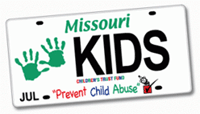The Children’s Trust Fund (CTF) was established in 1983 by the Missouri General Assembly as Missouri’s foundation for child abuse prevention. The CTF board of directors determined as policy that only primary and secondary prevention services would be eligible for CTF funding consideration. The board also decided that CTF would not fund tertiary prevention services, which are designed to provide treatment for a family or child once abuse or neglect has occurred. The chart below describes the primary and secondary prevention efforts, which are distinguished by their target population that they serve and the level of response of services to families.
Child Abuse and Neglect Definitions as They Apply to Prevention Efforts
Primary Prevention
Any action aimed at preventing child abuse or neglect from occurring for the first time to a child or in a family.
Secondary Prevention
Any actions or programs directed at populations or families who have been determined to be at-risk for abusive or neglectful behavior, or have circumstances in their lives that present challenges to positive parenting behaviors and optimal child development.
Who should receive these child abuse and neglect services?
Primary Prevention
Large, unselected groups of the general public. These actions must be delivered to non-abusive and non-neglecting families with the intention of helping them remain non-abusive and non-neglecting. There are no eligibility requirements for these programs beyond having a child or being in a position where one interacts with children.
Secondary Prevention
Selected, specific families and those who may be at-risk of abusing or neglecting children. The determination of the riskiness of a family is often made by an examination of demographic characteristics of the family (age of parents, income, education) or by a checklist of risk factors (unwanted pregnancy, substance abuse, parents were victims of childhood abuse or neglect, etc.).
Level of Service Response to Families
Primary Prevention
Services to all children and families.
Secondary Prevention
Special services to those with special needs/problems/risks defined by detailed individual assessment or on broad demographic variables.
Types of Activities/Services
Primary Prevention
*Public service announcements
*Public education for the general public
*Activities for children which prepare them for responsible adulthood and/or how to protect themselves from abuse
Secondary Prevention
*Home visitation programs for at-risk families
*Parent education for at-risk parents
*Respite care for families in crisis
*Family resource centers in low-income neighborhoods
*Parent support groups for at-risk populations




